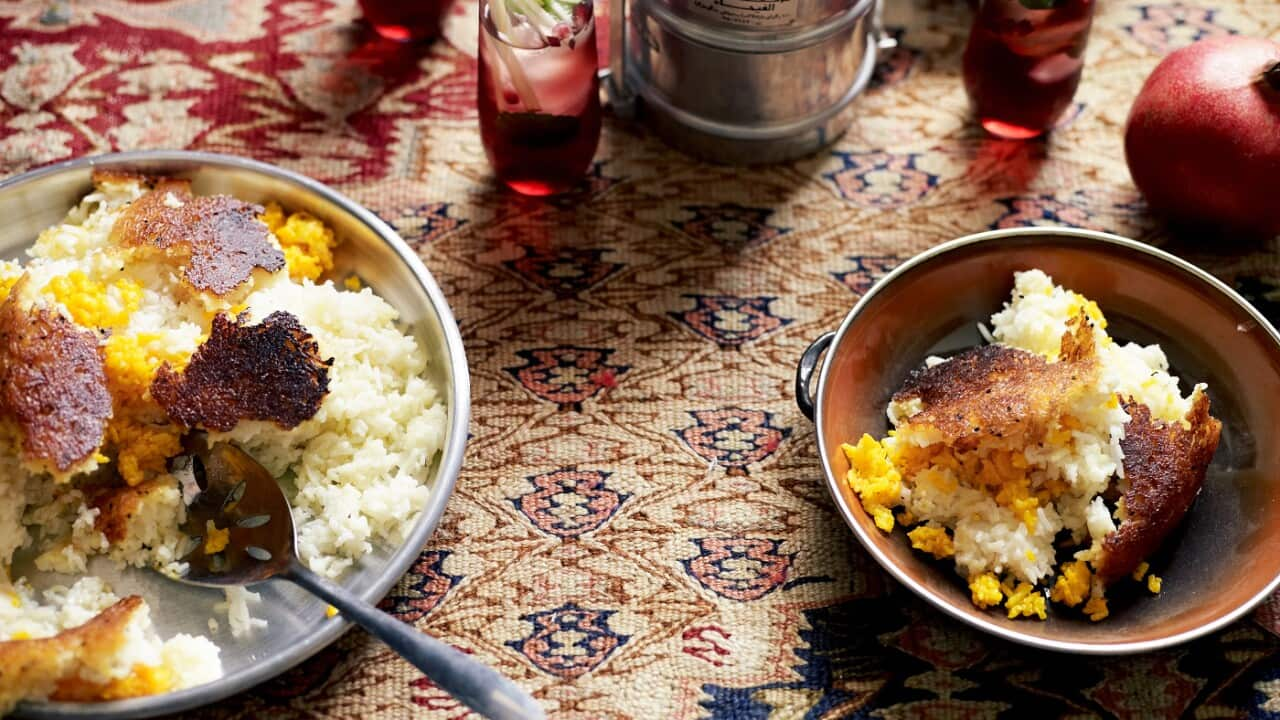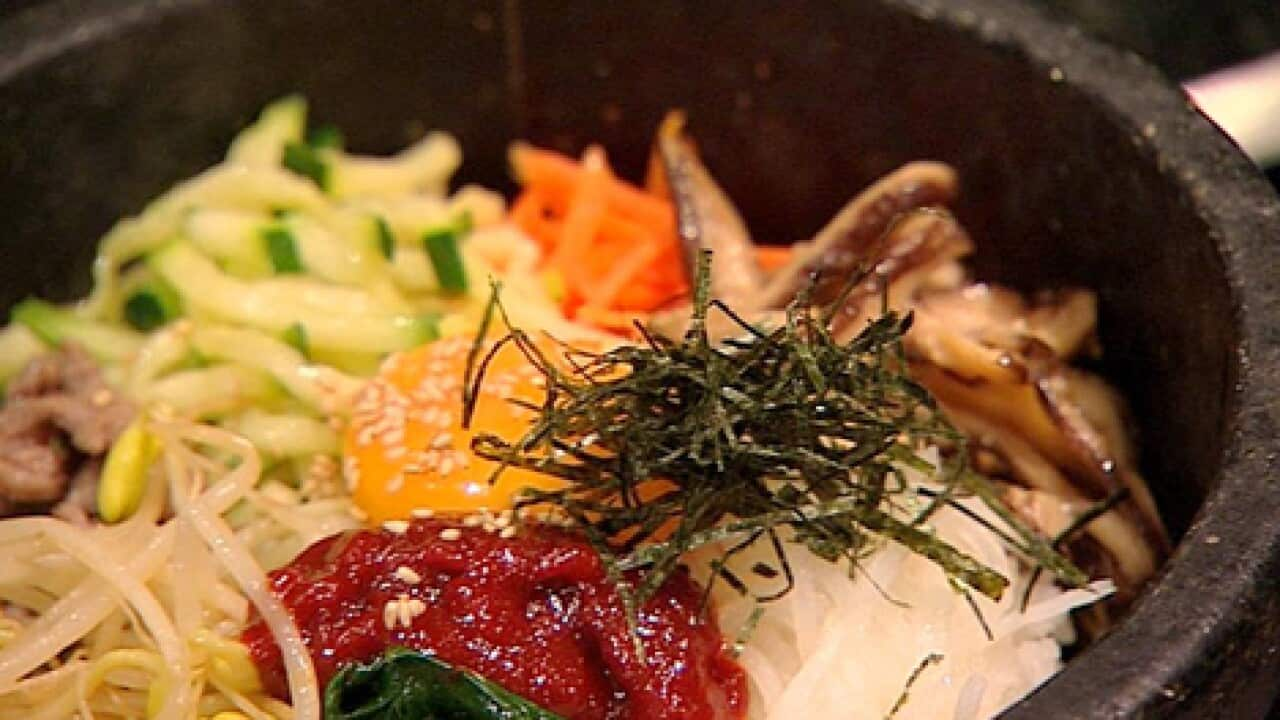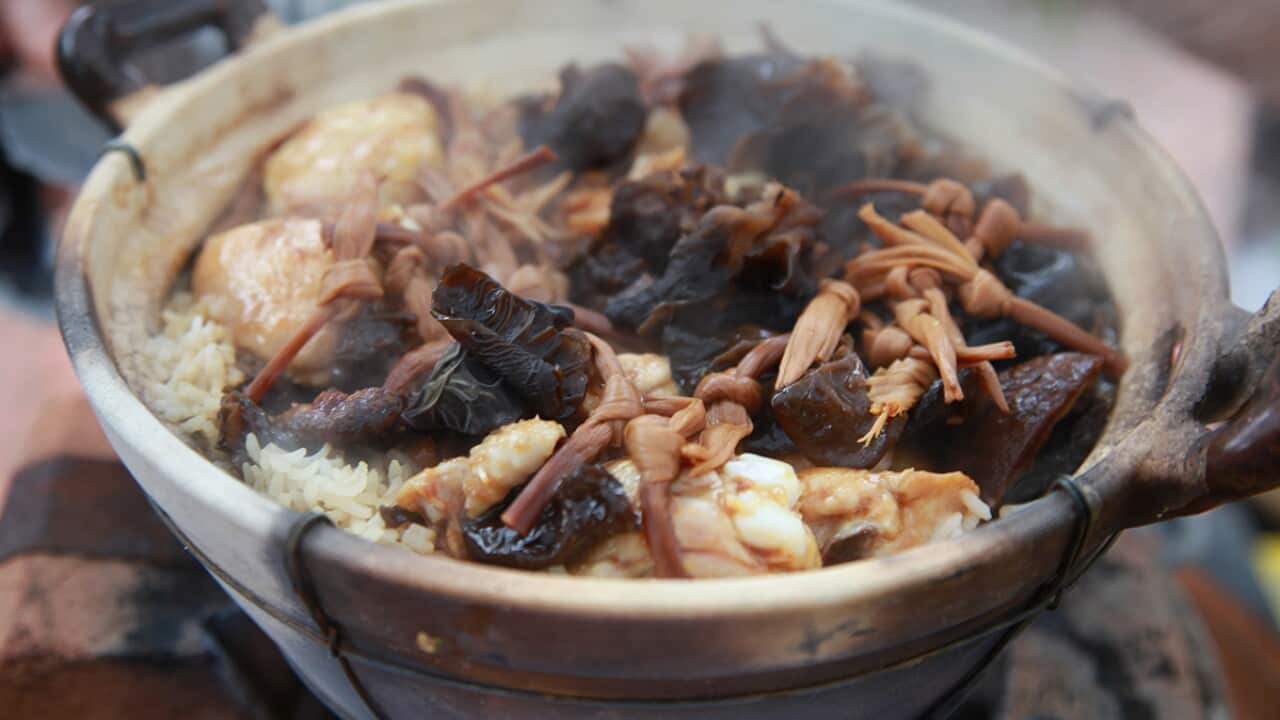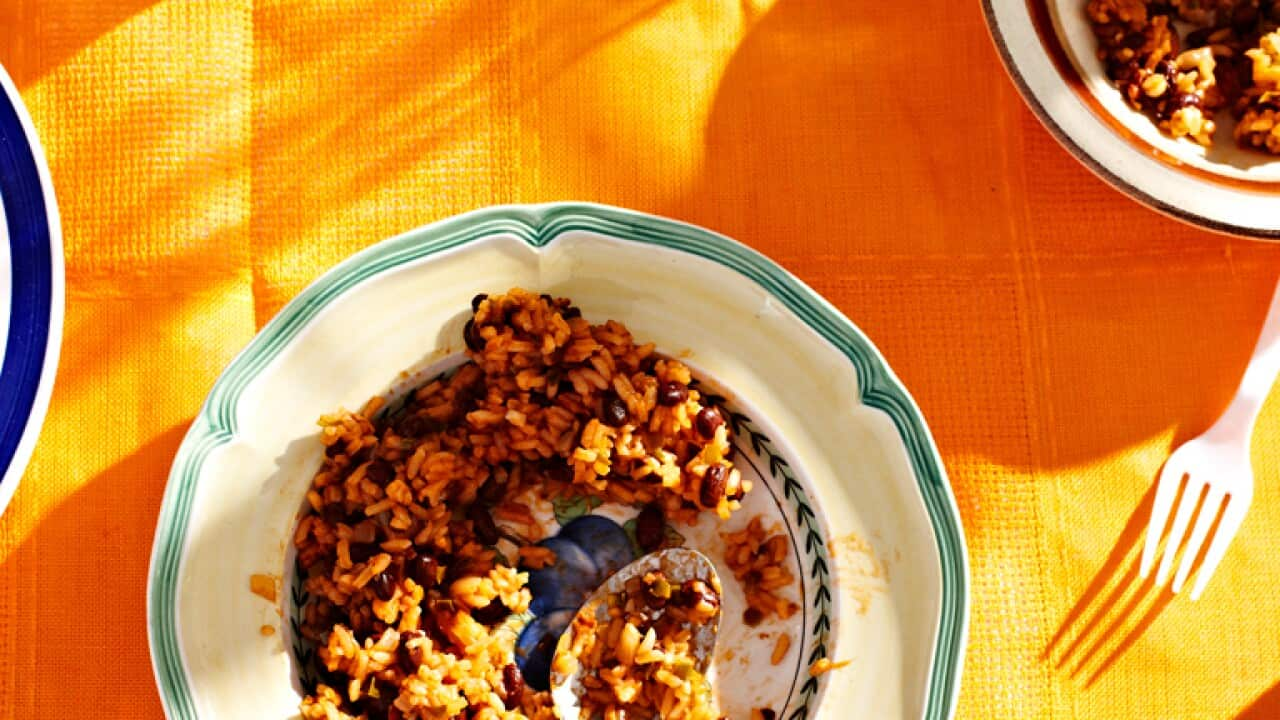Don’t throw out that golden, crispy crust of rice at the bottom of the pan: it’s a fought-over delicacy in many rice-eating cultures around the world, considered the best part of the rice because of its crunchy texture and toasted flavour. We don’t even have a word for it in English, and we’re missing out.
The crust is created by cooking rice in a pan over a flame, and it can take years to perfect. The method varies by culture, but all require a delicate balancing act, an exact ratio of rice to liquid, the right heat, the right pan and the just right amount of time.
In Iran, it’s called tah-dig, meaning “bottom of the pot”. A Persian chef’s reputation is staked upon their ability to produce the perfect crust on chelow (chelo), or rice.
Buttery, golden and crisp, it’s so loved that other ingredients such as thinly sliced potatoes or pieces of lavash bread are cooked in the same manner, by adding them to the bottom of the rice pan.
“It’s not hard to make after a while, but to find the exact time and temperature is hard,” says Forough Najar Behbahani of Sydney’s Din Din Persian Kitchen. The process involves heating oil in the bottom of the pan, and then adding the bread if you’re using it, or rice. The rice steams, while the tahdig cooks. It’s all about timing: “if you keep the rice in there too long, you risk the tahdig,” says Forough.
“A good tahdig is crispy but not black, the colour is not too dark. If you know tahdig, you’ll be able to judge if it’s good or bad straight away,” she laughs.
At Din Din Persian Kitchen, people call ahead to ask if they have tahdig because it’s not something that can be quickly made to order. While it’s often served on the side of a bowl of rice at home, Forough likes to bring out a complimentary plate of tahgid, when she’s got it, as a surprise for her customers.
“At home, you always want more – you’ve got to share it, and there’s usually not that much,” she says. In neighbouring Iraq, it’s called hkaka, and is often broken up so that everyone gets a piece.
In neighbouring Iraq, it’s called hkaka, and is often broken up so that everyone gets a piece.

Iranian rice with broad beans and dill has a golden tahdig (rice crust). Source: Nicolas Petit
Over to the east, in Central Asia, pilaf becomes plov, and the bottom of the dish is called gazmakh, but it’s just as special.
In Spain, it’s known as socarrat. Rice came to Spain via Arabia, and with it, a weakness for the crispy, toasted layer at the bottom. It’s the secret to the perfect paella, with each grain of rice perfectly cooked, and a golden crust underneath.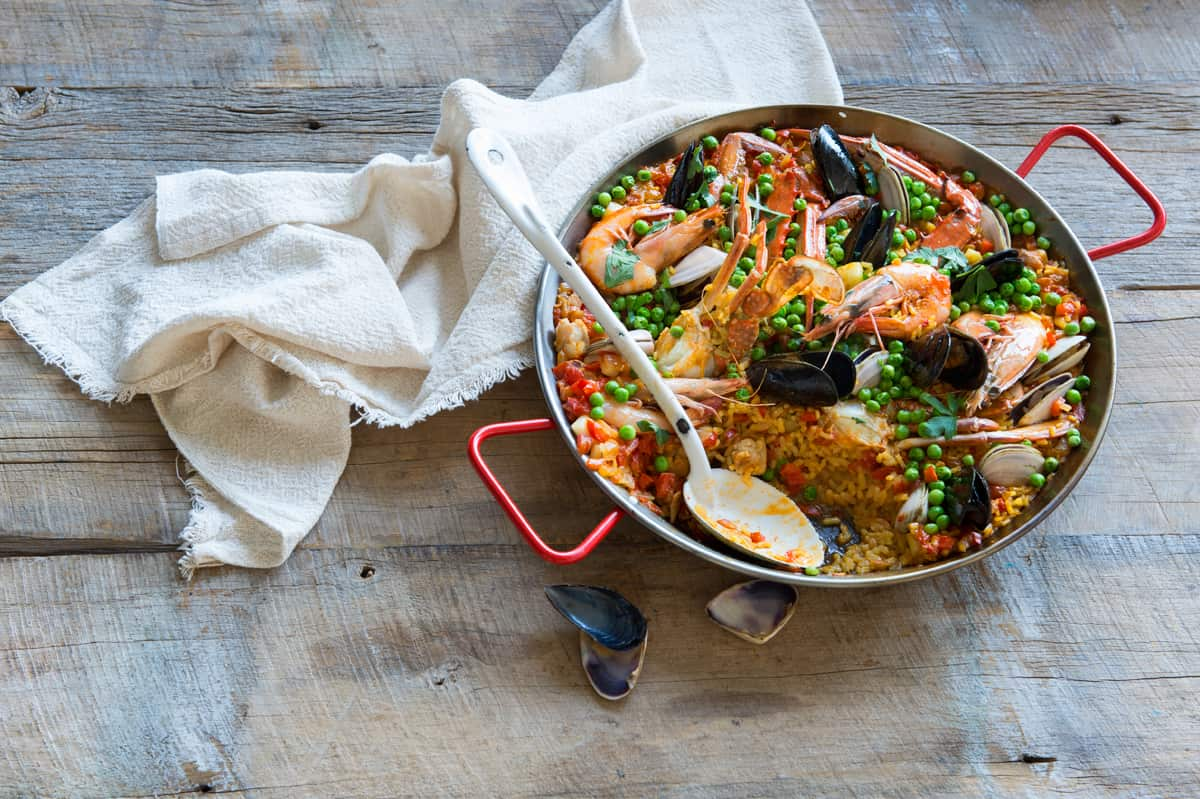 The invention of the rice cooker has been a triumph for convenience throughout Asia but turns out it’s not so great at creating that crispy-rice-at-the-bottom-of-the-pan. Many home cooks have learned how to trick their rice cookers into creating an inferior substitute, while in some countries, commercial versions of this crust – what was essentially a fortuitous by-product – are now made for retail sale.
The invention of the rice cooker has been a triumph for convenience throughout Asia but turns out it’s not so great at creating that crispy-rice-at-the-bottom-of-the-pan. Many home cooks have learned how to trick their rice cookers into creating an inferior substitute, while in some countries, commercial versions of this crust – what was essentially a fortuitous by-product – are now made for retail sale.

Paella with crab, prawns and chicken.
Guoba is the Chinese word for this “scorched rice”, added to sauces, soups and stews for a toasted flavour. In Vietnam, the rice-at-the-bottom-of-the-pan is known as cơm cháy, in Indonesia, intip, and in the Philippines, it’s dukot. Walk the streets of Cambodia, and you’ll see baskets of rice crusts left out to dry so that they become even crisper. These are then turned into bai kdaing, or rice cakes.
The Korean word for “blackened rice” is nurungi, and this is most celebrated in the form of dolsot bibimbap – mixed rice served in a sizzling stone pot that toasts the already-cooked rice. In Japan, rice crust is known as okoge, and is often eaten in tea or hot water.
The American and African continents get in on the action too: crispy concón is the way to a Dominican Republican heart, and Cuba, Colombia and Puerto Rico all have their own celebrated versions. In Senegal, it’s known as xoon.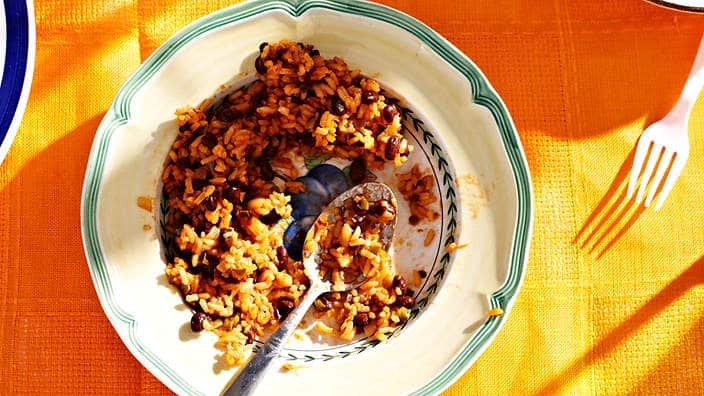 The thing that unites all these crispy bottomed delights is that they are home-cooked specialities that elevate the humble into something prized. It’s not just a matter of putting on a saucepan of rice and burning the hell out of it – it’s a learned skill to get the rice cooked and the crust perfectly golden, but not blackened. It can take many years of cooking rice until you earn your crust.
The thing that unites all these crispy bottomed delights is that they are home-cooked specialities that elevate the humble into something prized. It’s not just a matter of putting on a saucepan of rice and burning the hell out of it – it’s a learned skill to get the rice cooked and the crust perfectly golden, but not blackened. It can take many years of cooking rice until you earn your crust.

Mojo chicken (pollo con mojo).
Share
SBS Food is a 24/7 foodie channel for all Australians, with a focus on simple, authentic and everyday food inspiration from cultures everywhere. NSW stream only. Read more about SBS Food
Have a story or comment? Contact Us

